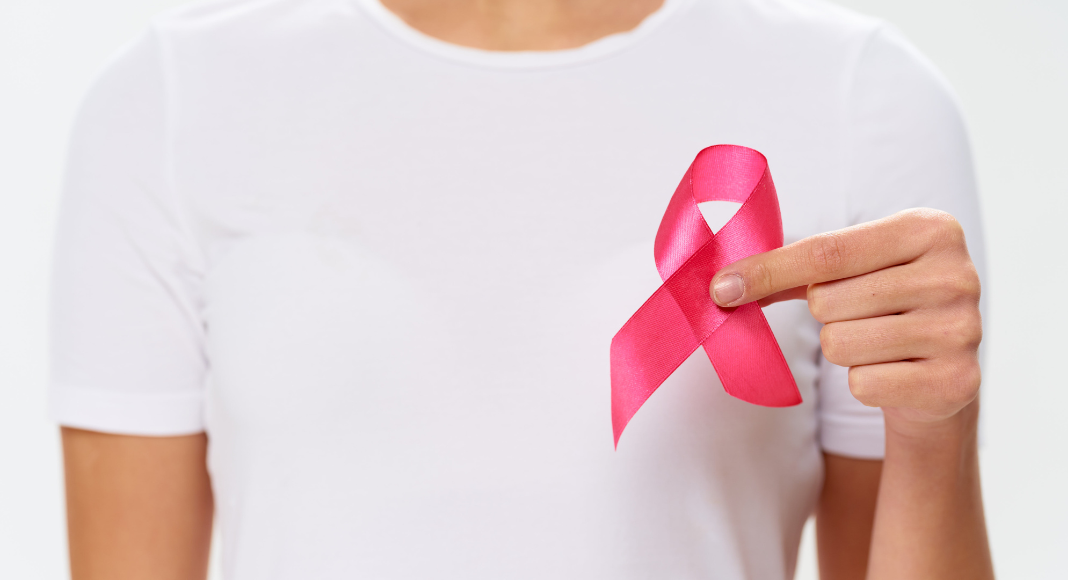October is Breast Cancer Awareness Month, which is a great time re-visit a few things when it comes to breast health.
1. This October, evaluate how well you’re taking care of you.
One thing that has really hit home with me is that I can’t possibly be the mom I want to be if I’m not taking care of myself. Self-care is so much more than a night out or a bubble bath or a glass of wine. It’s not forgetting about yourself and your basic needs.
It’s not loving to your loved ones or yourself if you don’t schedule those necessary appointments. When is the last time you got your eyes checked, had your bloodwork done, got a pap smear, had your teeth cleaned, or scheduled your mammogram? My guess is you’d never miss an appointment for your child. So give yourself that same love. In effect, taking care of your own health is loving your kiddos too because they need you to be healthy and well.
2. Use Breast Cancer Awareness Month as a reminder to hold your friends and family accountable.
Breast Cancer Awareness Month is also a great time to hold your friends and family accountable. Pester your mom, nana, and tias until they all schedule that mammogram. Maybe the best 40th birthday present you can get your friends is a reminder to get their mammogram.
3. Start (or continue) the habit of breast self-exams.
Breast health begins with a sense of what is normal for your breasts, also known as breast awareness. To promote breast health, consider doing regular breast self-exams. With practice, you will discover how your breasts vary in sensitivity and texture at different times during your menstrual cycle. You’re more likely to notice something abnormal with your breasts if you’re familiar with what’s normal. Talk to your doctor immediately if you notice any of the following:
Breast Cancer Awareness Month is also a good time to develop other healthy habits. Some breast cancer risk factors can be controlled. For example, don’t smoke, limit alcohol, maintain a healthy weight, and exercise on a regular basis.
4. Understand your personal risk of breast cancer.
The reality is that every woman is at risk for breast cancer, and this risk tends to increase over time. It’s important to talk to your doctor about the factors that may increase your risk of developing breast cancer. A medical professional can determine whether you are high risk or average risk. Risk factors include the following:
5. Follow the age recommendations regarding breast cancer screening from the American Society of Breast Surgeons.
Regardless of your age, breast cancer be on your radar. Below are some handy breast health guidelines that are true for women with an average risk of breast cancer. (If you’re curious, this is a super helpful post regarding when to begin other types of health screenings.)
Women with a higher-than-average risk of breast cancer should start annual screening mammograms at an earlier age and should be offered additional imaging each year.
In your 20s:
Women in their 20s should perform regular breast self-exams. In addition, they should have a clinical breast exam by a health expert at least every three years.
In your 30s:
Women in their 30s should continue with regular breast self-exams and those clinical breast exams by a health expert at least every three years.
Beginning at age 40:
Women age 40 and older should have a 3D mammogram every year.
6. Schedule the appointment.
If you’re younger than 40 and at average risk for breast cancer, you need a regular physical exam by a health care provider every three years. If it’s time to schedule one of those regular physical exams, pick up the phone today.
If it’s time for you to get a mammogram, love yourself and your people enough to schedule it right away too. I recently got a mammogram at Lovelace Women’s Hospital. (Lovelace Westside Hospital offers mammography as well.) And the scheduling couldn’t have been easier. You could call 505-727-6900.
But I prefer to schedule my appointments online. It takes literally minutes. In addition to their two convenient locations, Lovelace offers evening and Saturday appointments to make it even easier for you to get a mammogram.
Not only is scheduling easy at Lovelace, but the appointments themselves are so simple. I was in and out in under an hour. You may have heard from your mom or grandma that mammograms are painful. But I think advances have been made so the procedure is a little more comfortable for women. In fact, my mammogram wasn’t painful at all. So what are you waiting for? No excuses.
Sources
https://lovelace.com/news/blog/breast-health-awareness
https://lovelace.com/news/blog/do-you-know-your-risk-developing-breast-cancer













